Recent Storm Damage Posts
Is Your Virginia Business Storm Ready?
9/19/2022 (Permalink)
Flooding and other disasters can strike at a moment's notice. Even with advanced warning, things are going to go drastically wrong. However, having a plan for these kinds of disasters can help your business recover quickly. This is why you need to create an effective continuity plan for your business. You need to take the time to outline, test, and improve it.
Outline It
To start making your continuity plan, you will need to evaluate your business and note your processes, vulnerabilities, and potential losses. This step is crucial to creating a tailored plan for your business in Louisa, VA. From there, you can outline your plan. The things to include are:
- Scope of the plan
- Business areas
- Critical functions
- Dependencies
- Acceptable downtime
- Plan for hiring storm remediation professionals, maintaining operations, and reopening
Test It
The only way to know if your continuity plan works is to test it. A real incident will be the true test and the best way to see if your plan works. However, a controlled test is much more comfortable for business owners and can give you a realistic sense of gaps and areas that need improvement.
Improve It
You are going to put a lot of effort into creating and testing your plan. Once you complete the job, it is tempting to let your plan sit and hope for the best amid a disaster. However, if you do this, your plan could be useless when a disaster strikes, so you need to improve it after getting the test results.
This plan is crucial for businesses to recover from floods and storm damage. Therefore, you want to make sure you take the time to create an effective plan. Make sure you create a tailored plan and then test it out before a disaster hits. Keep improving it until it is thorough enough to withstand a disaster.
If you have storm damage to your business call the restoration professionals at SERVPRO of Louisa, Orange, and Madison Counties (540) 513-3111.
Understanding Flood Zones Can Help You Prepare For Storms
8/29/2022 (Permalink)
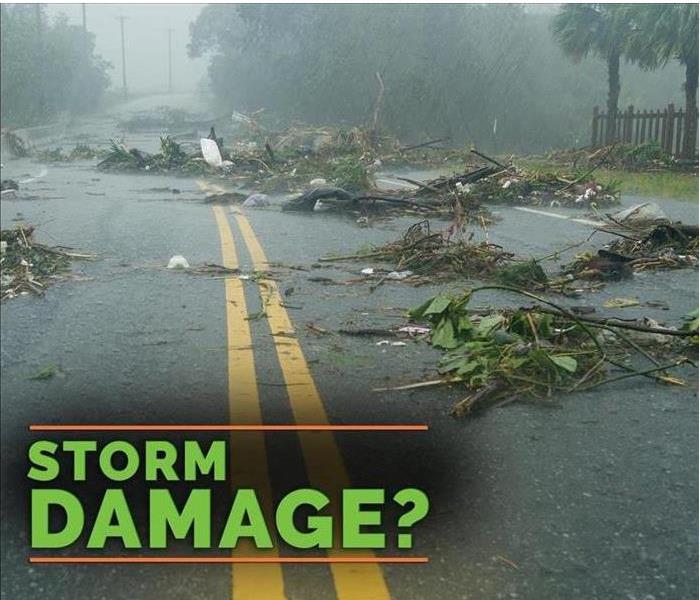 If you experience storm damage to your home or business, call the restoration pros at SERVPRO of Louisa, Orange and Madison counties (540) 513-3111.
If you experience storm damage to your home or business, call the restoration pros at SERVPRO of Louisa, Orange and Madison counties (540) 513-3111.
Floods are a relatively common natural disaster that many homeowners have to deal with at some point, especially if your home is located in a major flood zone.
1. Can Flooding Occur Anywhere?
Flooding can occur anywhere in the United States, no matter what time of year it is. There are certain seasons when floods are significantly more common, however. These seasons vary depending on where in the country you reside in.
2. How Can You Gauge Flood Severity?
The National Weather Service (NWS) has a list of flash flood warnings, categorized in order of severity. You typically receive these alerts via your emergency weather channels within approximately 6 hours of heavy rainfall or severe weather. The three major flash flood classes are "Base," "Considerable" and "Catastrophic."
3. What is a Flood Zone?
These are the areas that have the greatest risk of succumbing to a major flood in the event of a severe storm or natural disaster. There are multiple different levels, but it's still best to anticipate the worst, just to make sure you're adequately prepared.
4. How Do You Know Whether You're in a High-Risk Zone?
The easiest way to gauge your personal risk is to check the map provided by the Federal Emergency Management Agency (FEMA). There are several different maps provided, and each has their own unique information to offer regarding flooding.
5. How Can You Tell When a Flood is Coming?
The best way to stay informed is to sign up for an emergency broadcast alert system. NOAA Weather Radio All Hazards is just one of the many channels you should pay attention to in order to stay up to date on an incoming flood or storm.
Knowing your property's specific flood zone can help you prepare to face any imminent storms. If your property does succumb to water damage, then you need to contact flood remediation experts as soon as possible.
If you experience storm damage to your home or business, call the restoration pros at SERVPRO of Louisa, Orange and Madison counties (540) 513-3111.
Costly Damage to Your Home is Preventable
8/2/2022 (Permalink)
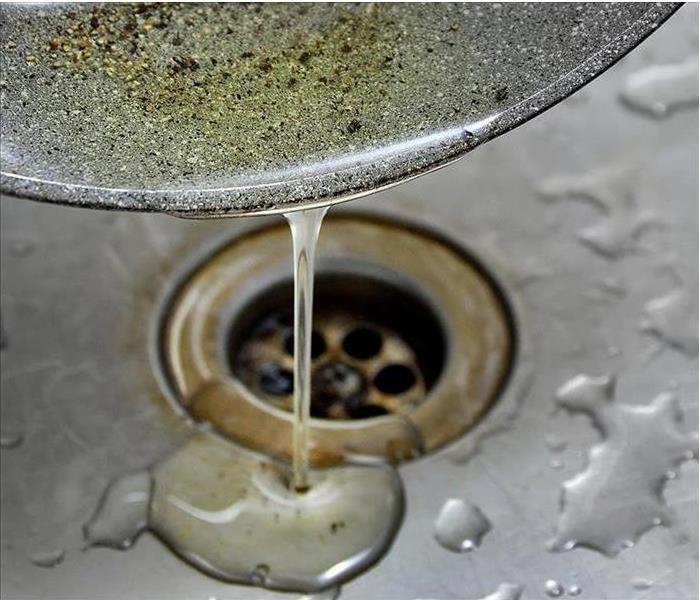 Never pour grease in a sink.
Never pour grease in a sink.
A sewage backup is one of the most common causes of black water floods. These dangerous incidents contain harmful biohazards and can cause severe damage to your property.
Preventing the issue in the first place is preferable to having to pay for expensive damage repairs.
1. Take Care of Your Sump Pump.
Proper sump pump maintenance is super easy and can save you a lot of storm damage and flood-related trouble in the long run. Make sure to check the filters and pipes for debris, such as gravel and silt, regularly. Also, make time to test your sump pump to ensure it's working properly.
2. Install Backwater Prevention Valves.
Backwater prevention valves can help prevent sewage backup and flooding. These devices are typically installed into your residential sewer line, working to enhance sewer cleaning. They permit raw sewage to leave your pipes, while simultaneously preventing it from backing up into your basement.
3. Choose Plastic Sewer Pipes.
Older sewer pipes are typically made out of cast iron, which can age and crack over time. Newer pipes are constructed from plastic, which has a significantly longer lifespan.
4. Only Flush Proper Paper Products.
You can easily clog your toilet by flushing the incorrect items down the pipes. Make sure you never flush feminine hygiene products, diapers, paper towels, or other thick items down the toilet. If you use multi-ply toilet paper, try to limit how much you flush at once to prevent toilet flooding.
5. Never Pour Grease Down the Drain.
Oils can harden inside your pipes, gradually slowing drainage and building up clogs over time. Instead, you need to pour the grease into a heat-resistant container and dispose of it in the trash.
Sewage backup floods are extremely messy and can cause a lot of damage. This is why your best course of action is to prevent them from occurring in the first place. Contact flood remediation experts if you have suffered from one of these floods.
If you experience storm damage to your home or business, call the restoration pros at SERVPRO of Louisa, Orange and Madison counties (540) 513-3111.
Our technicians available 24 hours a day for water emergencies, large or small. When you are dealing with water damage, immediate action is critical. From initial and ongoing training at SERVPRO’s corporate training facility to regular IICRC-industry certification, rest assured our staff is equipped with the knowledge to restore your property. Our staff is highly trained in property damage restoration.
We have earned the trust of hundreds of homeowners, business owners, and property professionals.
Storm damage can happen any time, that's why our team is available 24 hours a day. Specialists from SERVPRO of Louisa, Orange and Madison counties arrive quickly and start the water extraction process almost immediately. This immediate response helps to minimize the damage and the cleaning and restoration costs.
Powerful Virginia Storms and Other Causes of Flooding
5/19/2022 (Permalink)
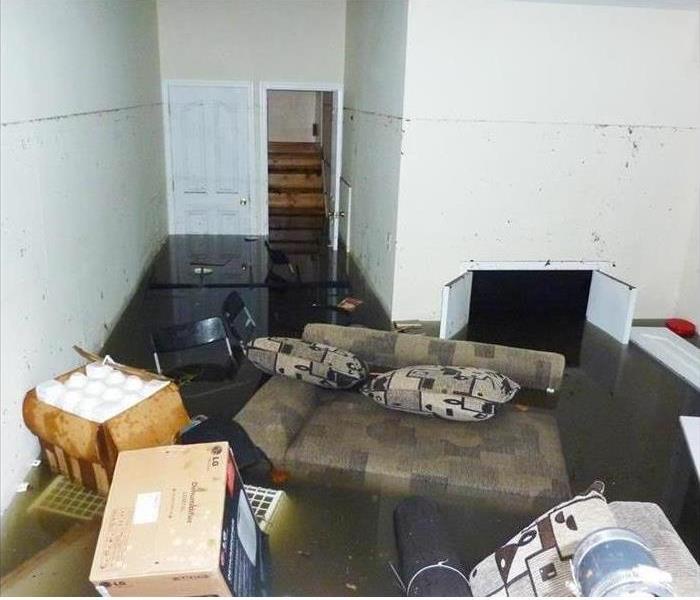 Poor drainage is often the cause of a flooded basement
Poor drainage is often the cause of a flooded basement
A flooded basement can be a serious headache. Thankfully, there are preventative measures you can take to lessen the odds it happens to you.
Difficult To Control Causes
Water can invade your basement as a result of complications that cannot be easily remedied without the expertise of a specialist. These origins include:
Surface water leaks.
Storm sewer systems backing up.
Wet soil pushed via hydrostatic pressure.
Preventing these causes may lie outside your immediate control. Other reasons you may experience a deluge within your basement can be handled much more directly.
Easy To Implement Prevention Measures
Poor drainage is often the cause of a flooded basement. Therefore, it is recommended you install gutters and downspouts to divert water away from your residence. You can bolster this improvement by upgrading windows and doors with ones that are certified watertight.
Deteriorating plumbing is another source of basement inundations. Pipes have varying lifespans. Hire a professional to inspect older homes. Pay attention to water-based appliances such as washing machines that reside within your lower quadrant. Replace supply hoses every three to five years as wear from prolonged usage puts them at risk of cracking or collapsing.
Water leak detection systems are fantastic forms of flood deterrence. Through the use of automatic shut-off valves, these beauties shut down your water supply at the first sign of irregular flow or after floors become damp, preventing troubling situations from developing.
Owning a sump pump means you can remove water and mitigate the damage as soon as it accumulates. Test yours twice a year to be certain it stands ready for when the need suddenly arises. Once your basement has been dried, the next stage is hiring a water restoration service professional to carry out the necessary repairs.
A flooded basement requires intense cleanup.
Lessen the chances you ever have to recondition yours, by implementing these recommended defensive actions.
If you have flooding or storm damage, call the local team of specialists, SERVPRO of Louisa, Orange and Madison Counties, (540) 513-3111.
Immediate response helps to minimize the damage and the cleaning and restoration costs. SERVPRO of Louisa, Orange and Madison Counties arrives quickly and starts the water extraction process almost immediately.
Water quickly spreads throughout your home and gets absorbed into floors, walls, furniture, and more. SERVPRO of Louisa, Orange and Madison Counties arrives quickly and starts the water extraction process almost immediately. Our specialists provide emergency cleaning and restoration services 24 hours a day, 7 days a week.
Lightning, Thunder and Severe Storms
4/13/2022 (Permalink)
Most lightning occurs in the summer, people can be struck at any time of year. Lightning kills about 20 people in the United States each year, and hundreds more are severely injured. Lightning strikes the United States about 25 million times a year. Lightning is interesting to watch but extremely dangerous.
According to the National Weather Service, in the United States, lightning fatalities have decreased over the past 30 years, lightning continues to be one of the top weather killers in the United States. Understanding the dangers of lightning is important so that you can get to a safe place when thunderstorms are on the way.
Understanding Thunder
Thunder is the sound made by a flash of lightning. Lightning heats the air quickly as it passes through the air. Usually, you can hear thunder about 10 miles from a lightning strike. Since lightning can strike outward 10 miles from a thunderstorm, if you hear thunder, you are likely within striking distance from the storm.
Storms can be severe at times and very dangerous. If you have storm damage to your home or business it can be over whelming, luckily there is a place for help. We can respond immediately to your emergency and have the expertise to handle your restoration or cleaning needs. SERVPRO of Louisa, Orange and Madison Counties is here to respond quickly when you have storm damage in the Louisa, Orange and Madison areas.
If you are a business owner, storm damage can be very costly. We understand that every hour spent cleaning up is an hour of lost revenue and productivity. When an emergency situation arises in your business, give us a call and we’ll be there fast with the help you need. Whether we’re dealing with a relatively small water cleanup scenario or a large-scale event, we work quickly to assess each unique situation and isolate the damaged area.
We can respond immediately to your emergency and have the expertise to handle your restoration or cleaning needs. SERVPRO of Louisa, Orange and Madison Counties.
Maintaining Building Exteriors To Reduce Storm Damage
11/20/2021 (Permalink)
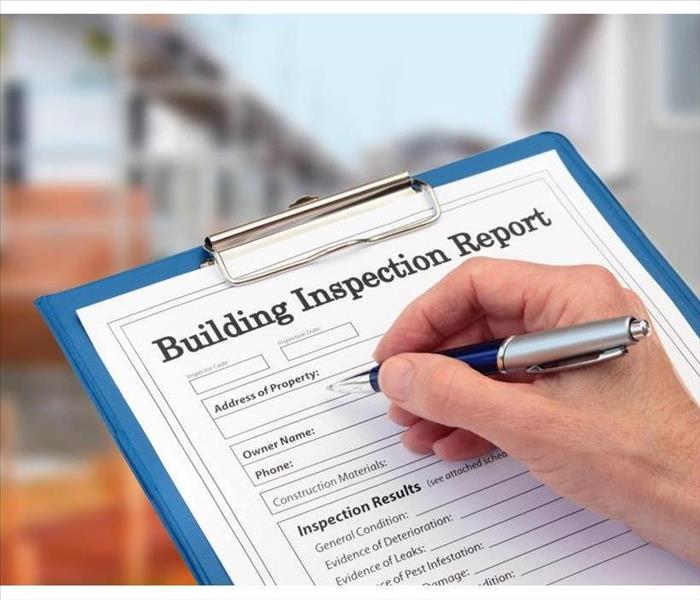 Perform a building inspection on a regular basis.
Perform a building inspection on a regular basis.
Keeping Building Exteriors in Good Condition to Reduce Storm Damage
Rain, wind, hail – if you have a business in Burr Hill, VA, it can be severely damaged by strong storms. Performing exterior maintenance on your building can help reduce storm damage. It is important to keep your building maintained in order to minimize the time and money spent on repairs after a severe storm.
Early Indications of Wear
Many problems with building exteriors can be identified while in the early stages and can be repaired before becoming a costly burden, especially after a storm. For example, rust stains may indicate a leak in the gutters or windows. The easiest places to start a building inspection are the areas that are the most vulnerable:
- Windows – Check the caulking around the exterior for cracks or gaps.
- Doors – Check that the doors close tightly and there are no gaps.
- Walls and siding – Check for hairline cracks in siding or even slight gaps in brick-and-mortar exteriors.
- Gutters – Poorly-fitting or blocked gutters can cause water to pool and drain down the side of your building, causing damage to the exterior.
Without proper exterior maintenance, problems with any of the above can be exacerbated during a strong storm and damage to the interior of the building, as well as the exterior, may result.
Prevention Is Key
The easiest way to save time and money is to keep your building maintained and perform a building inspection on a regular basis. A few simple things to do include the following:
- Re-caulk windows to keep them water- and wind-proof.
- Install weather-stripping around windows and doors to help plug gaps.
- Thoroughly clean all gutters and ensure that they are free from cracks or holes.
Making large repairs to a building exterior after a storm is often much more difficult than doing preventive maintenance and making small repairs as the need arises.
What To Do
If you need to repair your building after a severe storm, be sure to call a professional crew in Burr Hill, VA. While routine exterior maintenance can help reduce costs, if there is a need for a major repair, you will need an experienced team to get you back in business.
Make a Flood Damage Claim in 3 Steps
9/19/2021 (Permalink)
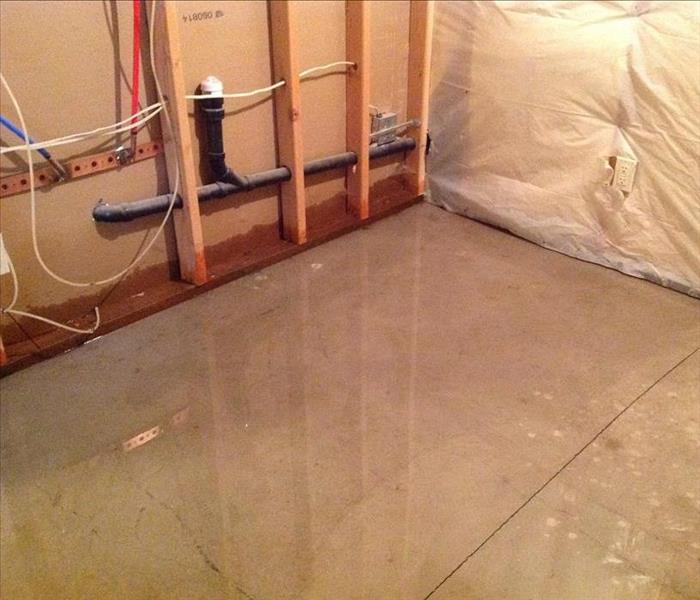 These are the three major steps to file a flood claim.
These are the three major steps to file a flood claim.
A flood can cause serious damage to your home. You should file a claim for flood damage as soon as possible. Check your policy to determine how much coverage you have for flooding and then follow these three steps to file a flood claim.
1. Document Damage
The first step toward filing an insurance claim is to document the extent of the damage. Capture photographic or video proof of standing water as well as damaged building materials and contents. While you should take timely steps to mitigate primary damage and limit the extent of secondary damage, you must capture the condition of the affected areas of your home beforehand. Also gather and prepare to provide information such as dates of purchase, item values, and any receipts for major possessions that you can find. You may dispose of damaged items after thoroughly documenting the damage.
2. Notify Your Insurer and Talk to an Adjuster
Next, notify your insurer of the property damage and file a flood claim. It is a good idea to file this claim as soon as possible, as it may take some time for your insurer to get around to processing your claim if the flood that has affected your home is widespread. An adjuster will contact you to discuss your coverage and help you prepare a sworn statement regarding the number of damages supported by documentation.
3. File Proof of Loss Within 60 Days
Be sure to file proof of loss documentation with an insurance company within two months of a flood. Payouts can only be processed once Proof of Loss is on file.
These are the three major steps to file a flood claim. You should maintain a reliable method of contact such as a cell phone number. As soon as you document the damage, you can contact a residential damage restoration service in Burr Hill, VA.
Leaky Roof Cleanup
8/30/2021 (Permalink)
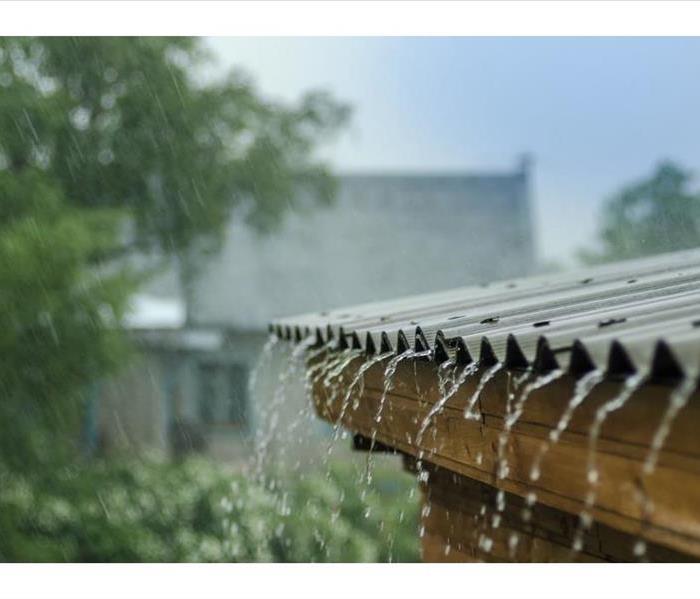 A roof leak can cause extensive damage, from mold growth to harm in the interior ceiling. Call SERVPRO for help!
A roof leak can cause extensive damage, from mold growth to harm in the interior ceiling. Call SERVPRO for help!
Cleaning A Leaky Roof
Many people have dealt with leaky roofs at one point or another. While it may not always sound like a big deal, a roof leak can cause extensive damage, from mold growth to harm in the interior ceiling. You don’t want to leave a leaky roof unattended. The roof is an essential component to the building. When it comes to flood cleanup for the roof, here is what a company may do for your Louisa, VA, building.
1. Tear Out
After a roof leak, the first step is to call a flood restoration company. They can do an assessment on the damage done to your roof. For instance, if there is any mold growth, they will be able to identify it and help clear it out. In some cases, the damage to the shingles or roof may be too widespread, and some materials may have to be torn out before you can focus on the restoration.
2. Dry Out
The company will usually dry out the salvaged materials in the second step. Generally, the goal is to save as much as can be saved. A damaged roof often has some parts that can be saved and dried out whereas others may have to be torn up. Once everything is dried, it can go through the disinfecting process. This will make sure there are no mold spores left.
3. Restore
The restoration involves returning your roof to like-new condition. This can mean replacing any missing shingles, redoing the installation or fixing any number of damages that were done to the roof.
When you have a roof leak, it’s important that you deal with it right away. Water damage has a way of getting worse over time. The longer you leave it, the more you are likely to have mold growth and extensive damage that cannot be salvaged. When it comes to restoration, having as much of the original roof as possible helps.
Making a Flood Damage Claim
8/4/2021 (Permalink)
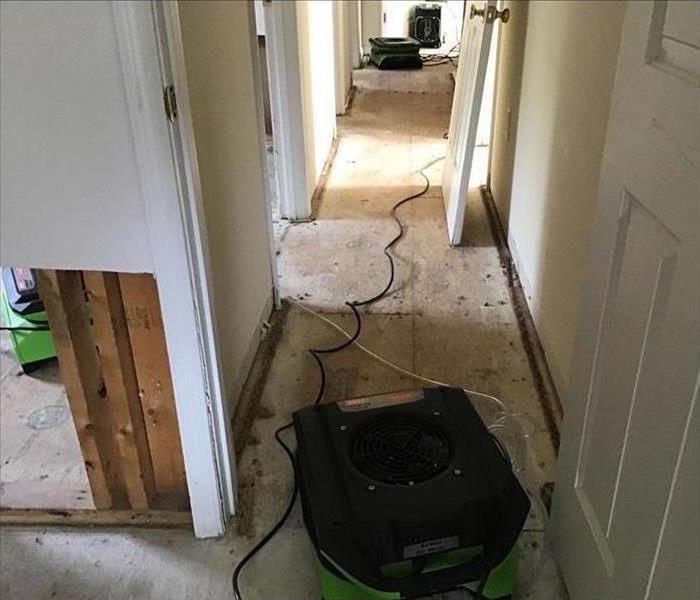 Storm restoration services in a Louisa, VA home
Storm restoration services in a Louisa, VA home
How to File a Flood Damage Claim
In the event that you have to make a flood claim in Louisa, VA, following a storm, knowing how the process works will make a challenging situation a bit easier to endure. It is in your best interest to move quickly to contact your insurance adjuster, particularly when damage is widespread throughout your locality.
Begin Remediation Immediately
After you have notified your insurance company that your home has sustained flood damage, get to work right away on your own or by engaging the services of professionals to address it. Mold can begin to grow within 24 to 48 hours after inundation, so your adjuster will understand the need to move quickly.
• Take lots of digital photos and videos to document the damage to your home and property.
• Remove but do not yet discard, materials that cannot be salvaged.
• Remove excess water by pumping, mopping and blotting to prevent further harm to your home.
• Get the air circulating with fans and air conditioners, and as a last step, dehumidifiers.
• Be sure to inspect, and work to dry, hidden areas where mold can grow.
• Begin the cleaning process for belongings that can be salvaged.
• Compile a list of losses and include any receipts you have retained. Your credit card history can be useful for the task of filing out an accurate flood claim.
• Keep receipts for any purchases of goods or services related to the flood.
• Sign the proof of loss statement that your adjuster produces. Additions can be made if necessary for the insurance claim.
It is important to understand that both the restoration of your home and the settlement of your insurance claim will be processes that require time, effort and patience.
Unless you live in an area prone to flooding, it is likely that a flood claim will be a once-in-a-lifetime event. Accurate documentation is the key to fair compensation.
How To Prepare Your Building For a Storm
5/20/2021 (Permalink)
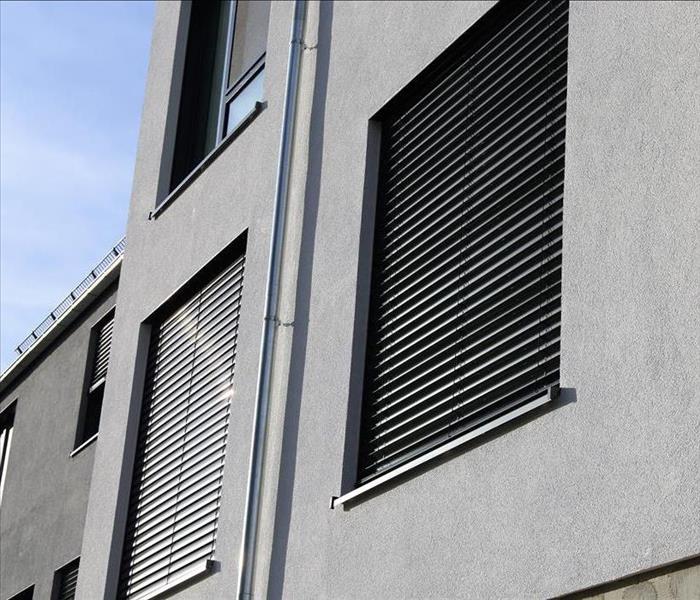 Storm shutters can protect your buildings window against high winds.
Storm shutters can protect your buildings window against high winds.
Preparation Tips Before a Storm
Many are aptly prepared for storm damage, such as flood water, in their homes, but it's equally important to prepare your commercial building if you know a storm is approaching in Rhoadsville, VA. Whether you are an employee or own the building, you should help prepare your commercial building for a storm. There are many preparation tips you can keep in mind before a storm.
Assess Your Property Beforehand
To begin your storm preparation plan, it's important to assess your commercial building. You should take note of the strengths and weaknesses of where your building is located and how a storm would affect your property. Reinforce anything that would be damaged by a storm or flood water. A few ideas for your inspection include:
- Ensuring shutters are on windows in case of high wind
- Anchoring any large furniture to its place
- Removing any large branches or trees that are close to your building and could fall on it during a storm
- Making sure you've had a recent roof inspection to ensure it is strong enough to withstand a storm
Although an assessment may not seem necessary, it is important to do before a storm comes. It's always better to be safe than be sorry.
Put Documents in a Safe Place
No matter what type of business you have, there are almost certainly important documents that need to be kept safe and dry. If you have a flooded building, documents can quickly be ruined beyond repair. Documents to preserve include legal documents, financial documents such as account statements and tax information.
Move all documents to a safe and dry space, such as an upper-level floor in a filing cabinet or back up digital information on a hard drive. Any backed-up data should be kept off-site to ensure it is kept safe.
Preparing your building for storm or water damage can prevent costly repairs from wind or flood water. If your building does experience storm damage, be sure to call in a storm damage company to help you with the restoration process.
Important Insurance Facts for Landlords and Renters
3/18/2021 (Permalink)
 Rental property in Bur Hill, VA.
Rental property in Bur Hill, VA.
Important Insurance Facts for Landlords and Renters
If you own a large rental property, you know that a large storm in Burr Hill, VA, has the potential to cause a lot of damage to your property. It could even require your tenants to have to relocate for a period of time. With the right insurance policy, you will be covered for structural damage to your property from such things as high winds, heavy rains and lightning. A storm remediation company in your area can help you recover from a large storm and in some cases help you more efficiently handle insurance claims. For your tenants, renters insurance protects them for losses to their belongings and has provisions for other important situations. Some landlords strongly encourage or require their tenants to purchase this coverage.
Renters Insurance Facts
Many people who rent think they do not own enough stuff to make insurance worthwhile. However, when everything is added up, the value of a person's clothes, furniture and personal items can be significant. In general, renters insurance is fairly inexpensive, plus this insurance coverage includes the following protections:
- Provides for relocation expenses if necessary
- Includes liability coverage for damages causes by a tenant
- Includes different levels of replacement for personal items
The right policy provides peace of mind for the renter and has benefits for the landlord, too. It is an affordable way for renters to avoid a financial loss.
Commercial Property Information
As a landlord, there are many things you can do to protect your property, including getting the right insurance, and seeing that your tenant has renters insurance. Also, make sure to follow all applicable rules and regulations concerning your tenants, such as including the necessary safety devices and alarm systems on your building. Regulation inspections of your property by knowledgeable contractors also help you withstand the effects of a storm. It's important to keep an eye out for items that could cause injury on your property, such as broken railings on stairways.
Don't Wait for Adjusters After a Storm
1/13/2021 (Permalink)
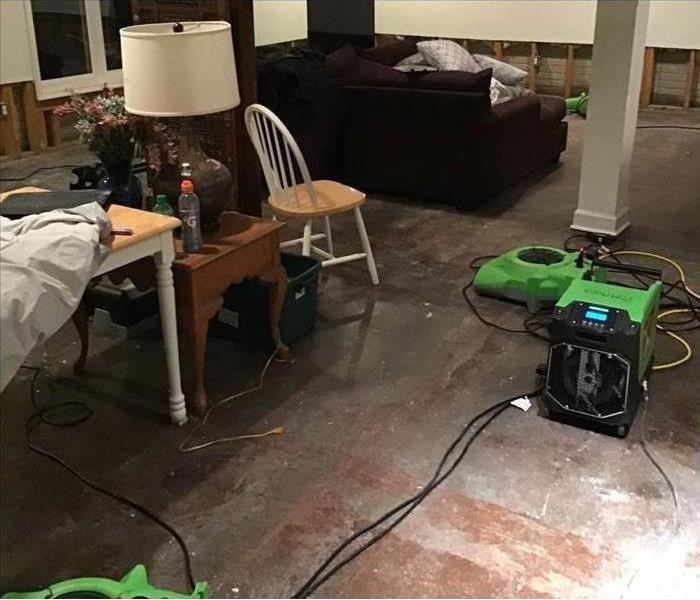 Storm restoration services in Locust Hill, Va
Storm restoration services in Locust Hill, Va
Don't Wait for Adjusters After a Storm
Strong storms with high winds and heavy rains can lead to floods and the destruction of property. If your home in Locust Hill, VA, suffers damage in a flood, immediate action is needed to begin cleanup and repairs. Check with your insurance provider to see if you have flood insurance to help cover the cost of repairs, but don't delay your rebuilding efforts.
1. Safety first
After a flood, shut off the gas and electricity as soon as possible. Wear protective gear whenever you enter the premises as flood water can be toxic.
2. Clean everything
Delaying the cleanup process until you hear from an adjuster about your flood insurance can lead to mold damage. Cleanup should begin as soon as safely possible. Standing water should be removed and soaked furniture and other salvageable items should be removed and thoroughly dried out. All appliances should be unplugged and dried out. Mud and storm debris often makes its way into the home during a flood. Shovel it all out. Scrub down the walls and floors with disinfectant and sanitizer before attempting to move anything back inside. You can consult a storm damage restoration specialist if you don't want to handle the task of cleanup yourself.
3. Make a list of damages
As you clean up, keep a detailed list of damages. Everything from furniture and items that were destroyed to flood damage to the structure of your home. Provide this list to your insurance adjuster when they are able to visit. Adjusters are often very busy after major storms. Keeping a list of damages for them allows you to report what you have lost while moving forward with cleanup and rebuilding.
4. Rebuild
Only after your home is safely cleaned and dried out should you move ahead with repairs and rebuilding.
If your home in Locust Hill, VA, is in an area known for frequent devastating storms, check with your insurance to verify that you have flood insurance or what type of protection you might want to add in case of a flood.
How To Determine When Storm Damage Is Deductible
11/16/2020 (Permalink)
 Some expenses caused by a storm might be tax-deductible
Some expenses caused by a storm might be tax-deductible
How To Determine When Storm Damage Is Deductible
When a storm sweeps through your community, it can leave a path of destruction both physically and financially. A company in Louisa, VA, should investigate all of its options in the wake of storm damage. It's easy to miss out on potential relief options such as signing up for disaster assistance in the form of low-interest loans. Insurance is also a big source of financial relief depending upon a company's policy. In general, a company's insurance will pay for damage as the result of high winds, hail, heavy snow and rains. In the case of a flood, a business will be covered for some damages if it has a flood insurance policy.
Professional Advice
Some expenses caused by a storm might be tax deductible. The rules for claiming tax write-offs on the federal and state level can be a little confusing so it makes sense to consult with professionals on what costs and expenses to claim. These professionals might be of help:
- Tax accountant or professional
- Insurance agent
- Company accounting department
Storm damage remediation franchise
In general, expenses paid for by the insurance company will not qualify for a tax deduction. However, expenses above and beyond what is covered by insurance can often be written off as losses and therefore reduce the amount of taxes that must be paid that year.
Quality Cleanup
Another option for improving financial results is for a company to work with a local storm mitigation team. The fast response of technicians can get to storm damage before it gets worse and causes such secondary damage as mold growth or degradation of materials. The faster water damage is addressed the less it is likely to cost. A professional team will also be able to help with keeping good records in terms of damages and costs. This is important both when dealing with the insurance company and the tax man.




 24/7 Emergency Service
24/7 Emergency Service









